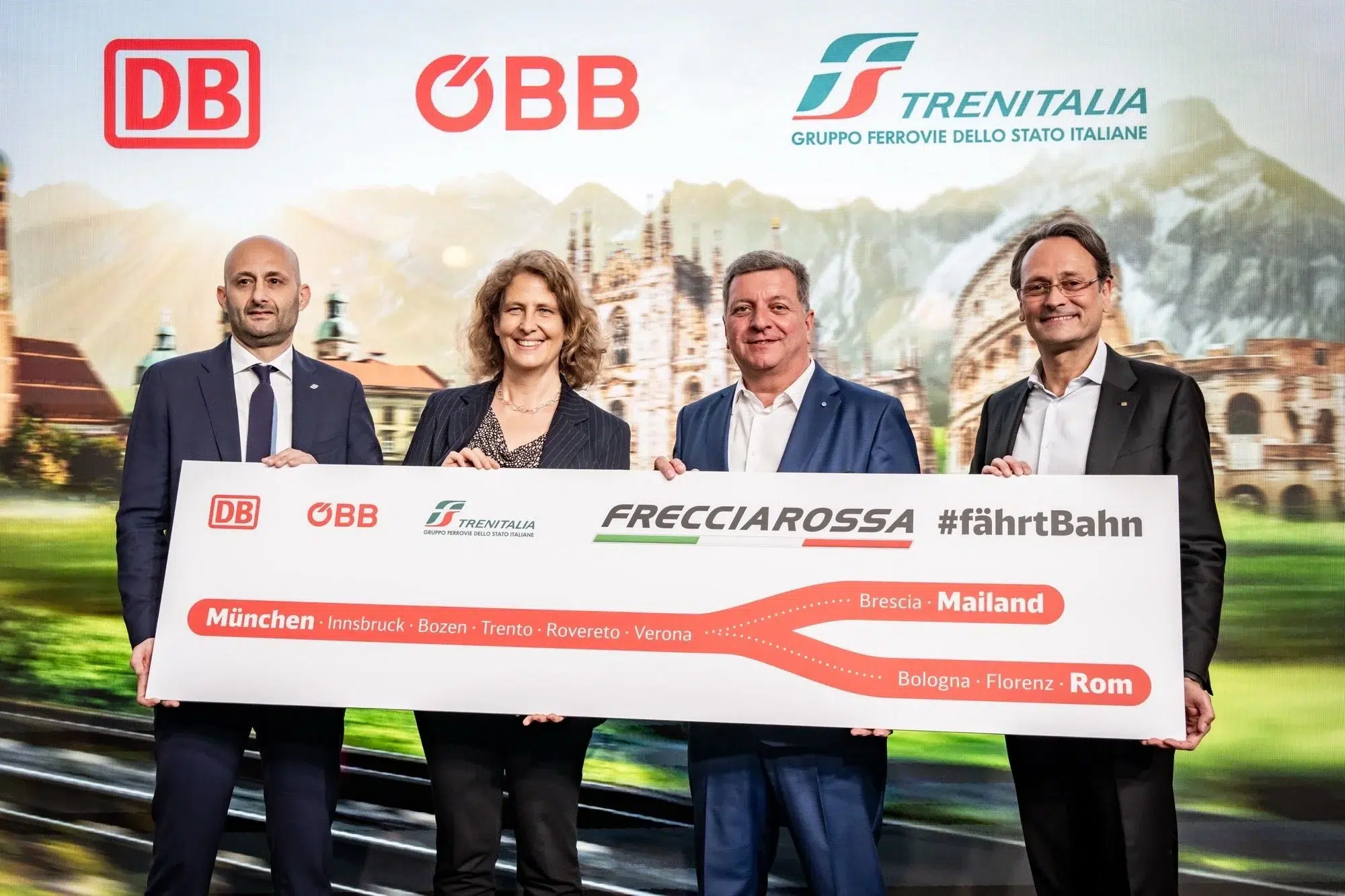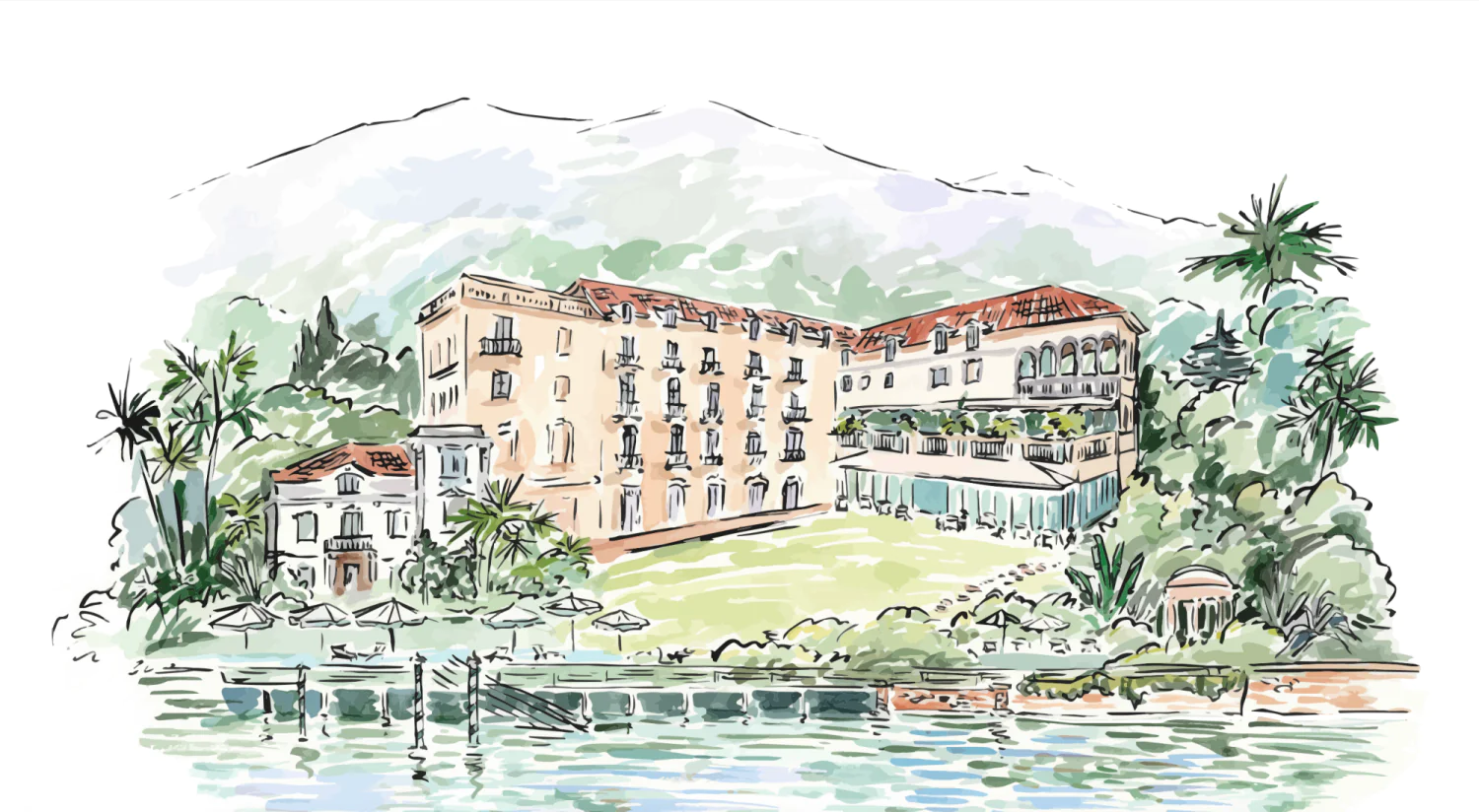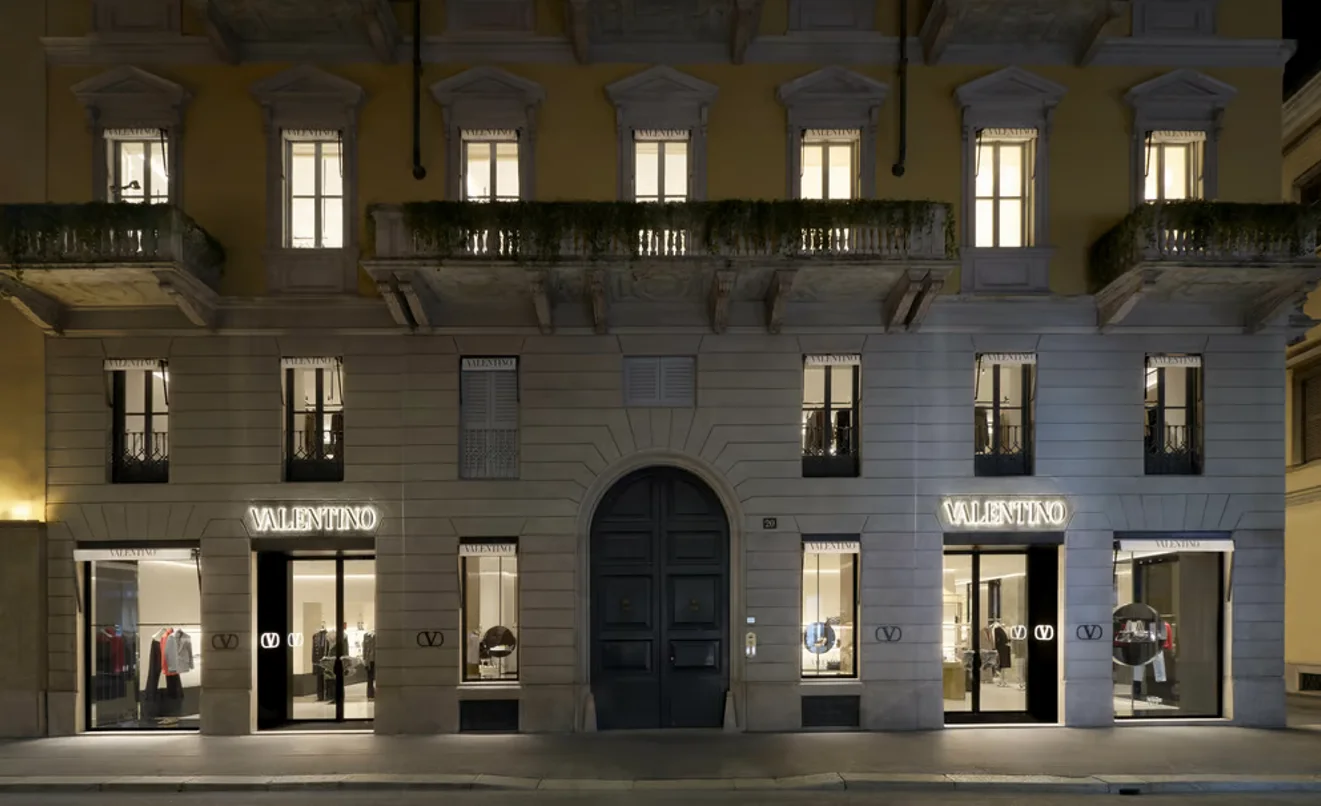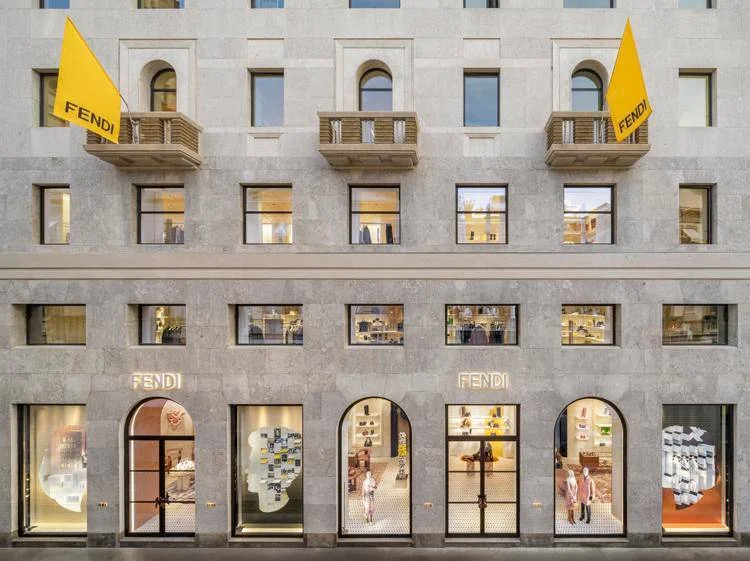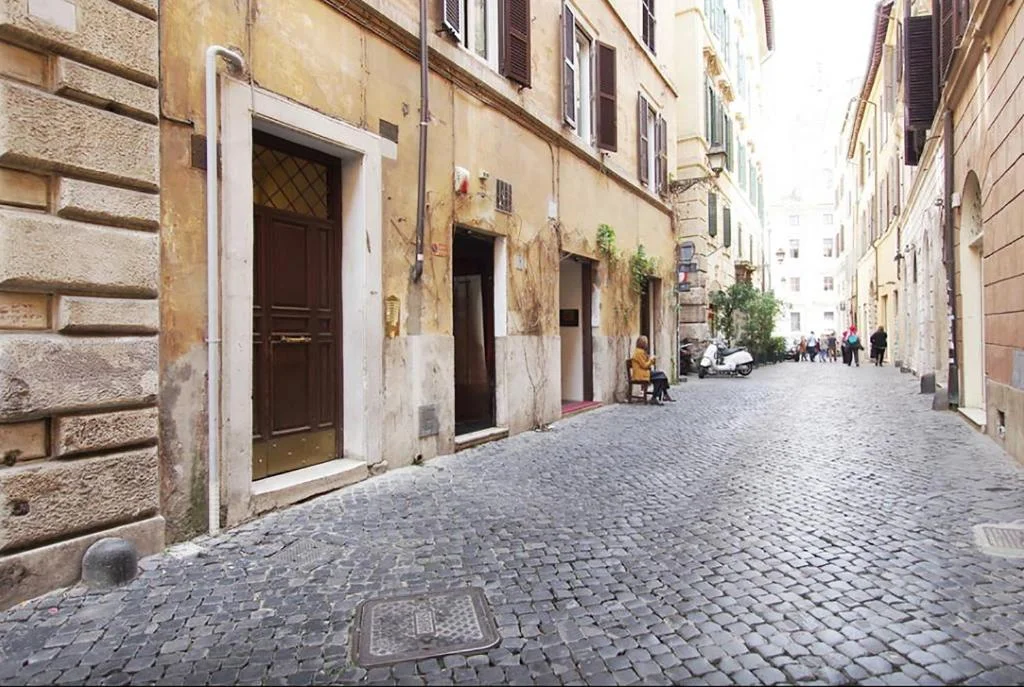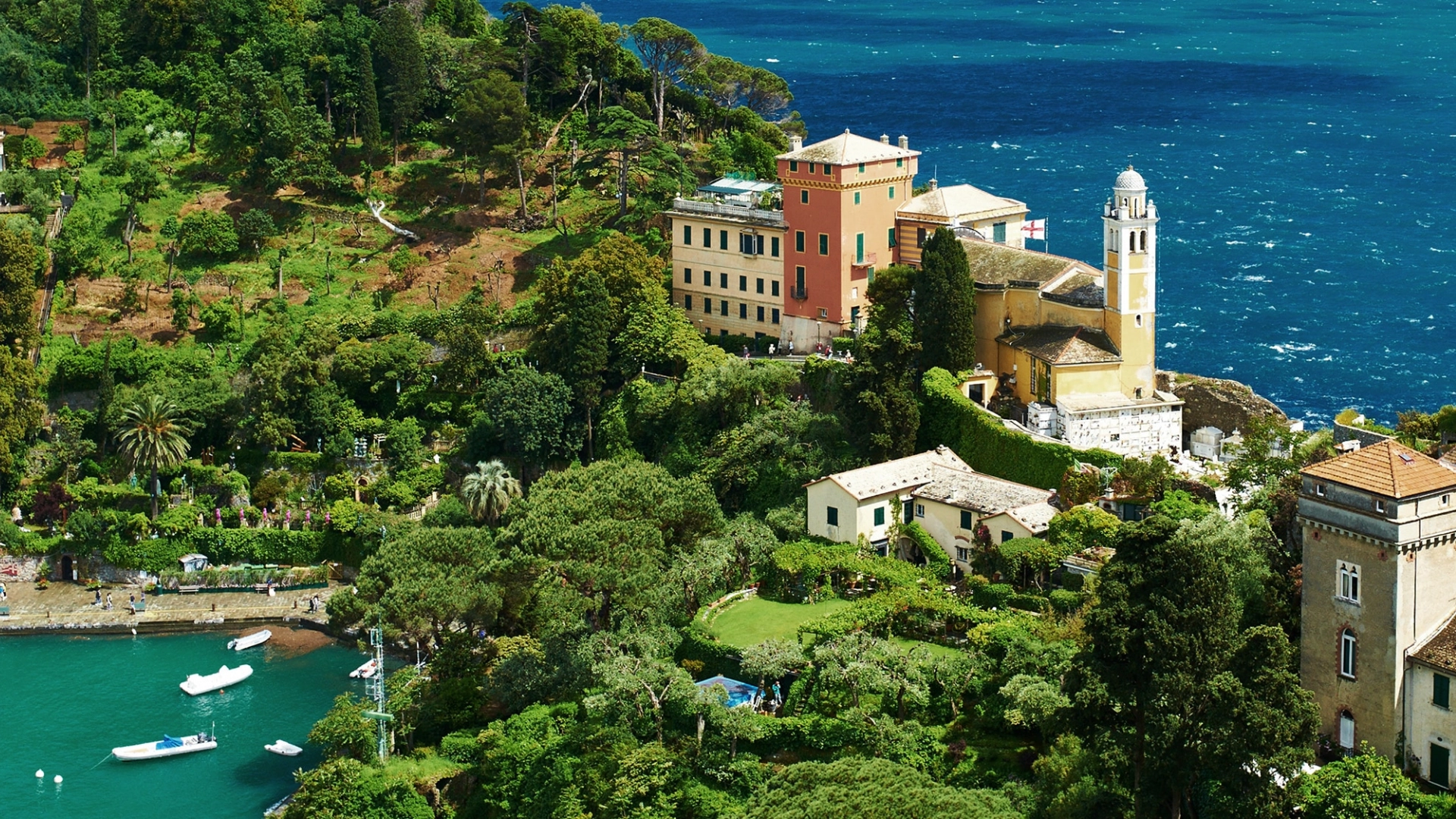Frecciarossa Expands Beyond Italy
While Italy’s Frecciarossa has long been a symbol of speed, comfort, and modern railway technology, the new agreement between Trenitalia (Gruppo FS), Deutsche Bahn (DB), and Österreichische Bundesbahnen (ÖBB) marks a turning point in European mobility.
From 2026, high-speed connections will directly link Milan – Munich and Rome – Munich, reducing travel times and reinforcing rail as the sustainable alternative to short-haul flights. By 2028, the network will extend further to Berlin and Naples, offering up to 10 daily cross-border services.
This project is part of the ambitious “Metropolitana d’Europa” vision: a seamless high-speed rail system connecting Europe’s cultural and economic capitals.
Travel Times and Routes
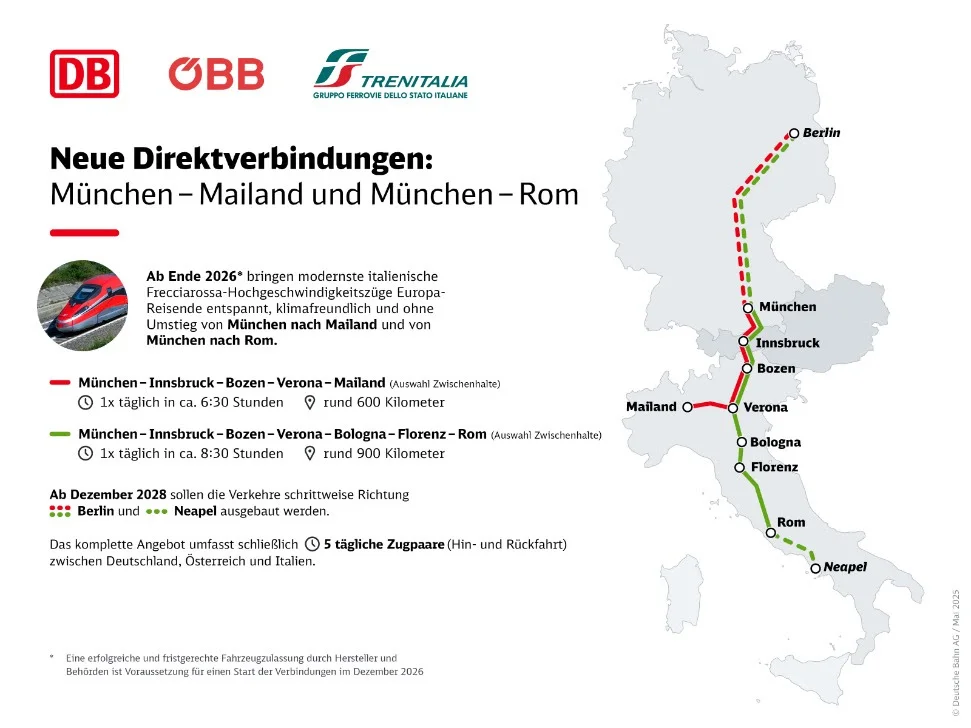
- Milan → Munich: 6h30, via Brescia, Verona, Rovereto, Trento, Bolzano, Innsbruck.
- Rome → Munich: 8h30, via Florence, Bologna, Verona, Rovereto, Trento, Bolzano, Innsbruck.
The opening of the Brenner Base Tunnel will cut journey times by about an hour, reinforcing the strategic role of this Alpine corridor.
Sustainable and Strategic
The initiative has been selected as a European Commission Pilot Project within the Commission Action Plan, highlighting its role in boosting sustainable cross-border transport. According to Trenitalia’s CEO Gianpiero Strisciuglio, the goal is clear:
“The Frecciarossa is no longer just Italy’s train. It is becoming the train of Europeans.”
For DB and ÖBB, the partnership strengthens the north-south corridor, ensuring business, tourism, and cultural flows are not only faster but also greener.
What It Means for Travelers and Investors
For leisure travelers, these links simplify exploring Italy, Austria, and Germany without flights. Munich, Verona, and Bolzano become more accessible than ever, perfect for city breaks, cultural trips, and ski holidays.
For business and real estate investors, the project enhances regional connectivity and property value growth in cities along the route. Locations such as Trento, Bolzano, and Innsbruck will benefit from better access to Milan, Rome, and Munich, creating opportunities for both tourism infrastructure and residential markets.
A Step Toward the European High-Speed Grid
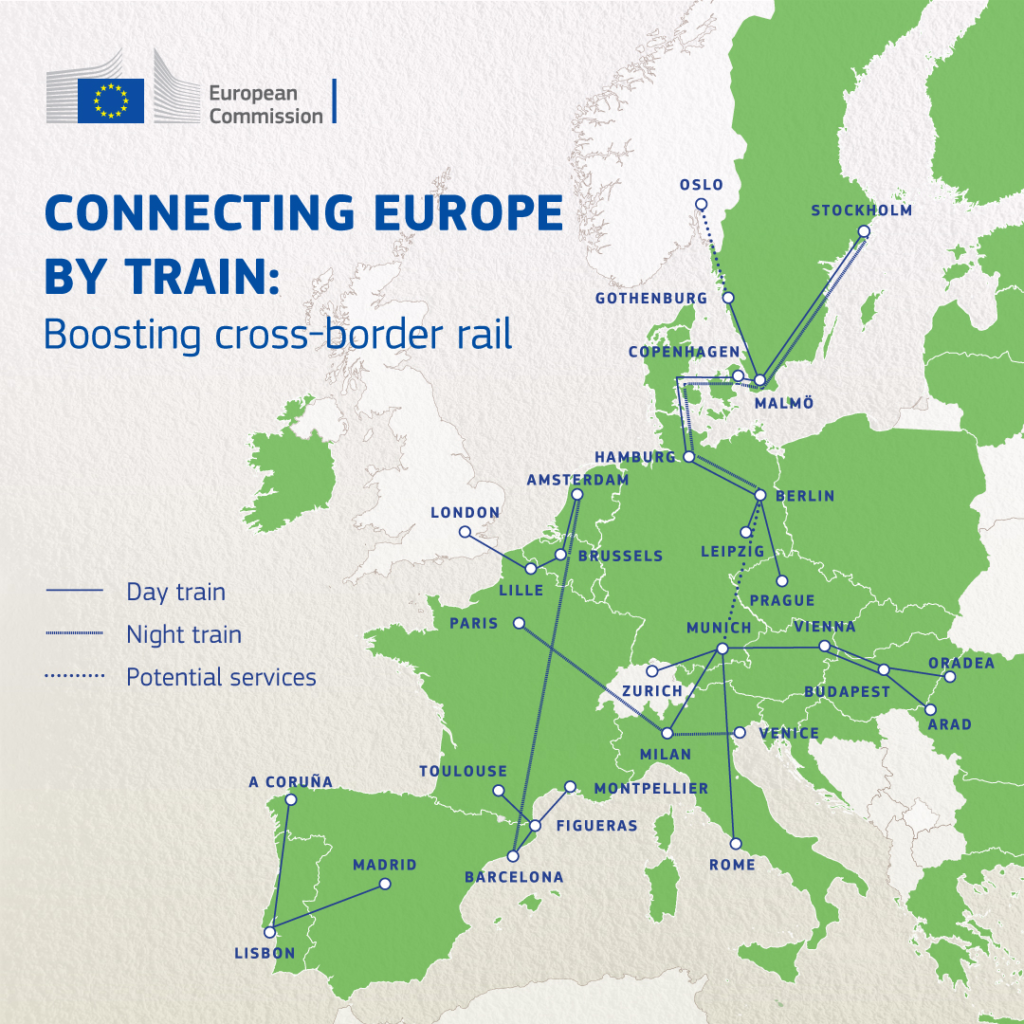
The Frecciarossa 1000, built for interoperability across multiple European railway systems, is at the heart of this plan. Already operating in France and Spain, it is now set to conquer the German market. With this expansion, Trenitalia positions itself as a leader in the European high-speed revolution.
The long-term vision is clear: by 2030, Europe will have a truly interconnected high-speed rail network, where Rome, Paris, Berlin, Madrid, and Vienna will feel closer than ever before.
If you are interested in European railway innovation, don’t miss our article on the Oktoberfest Train from Rome to Munich, another step toward the “Metropolitana d’Europa.”

